Noh Mask Item Number: Ed5.2499 a-c from the MOA: University of British Columbia
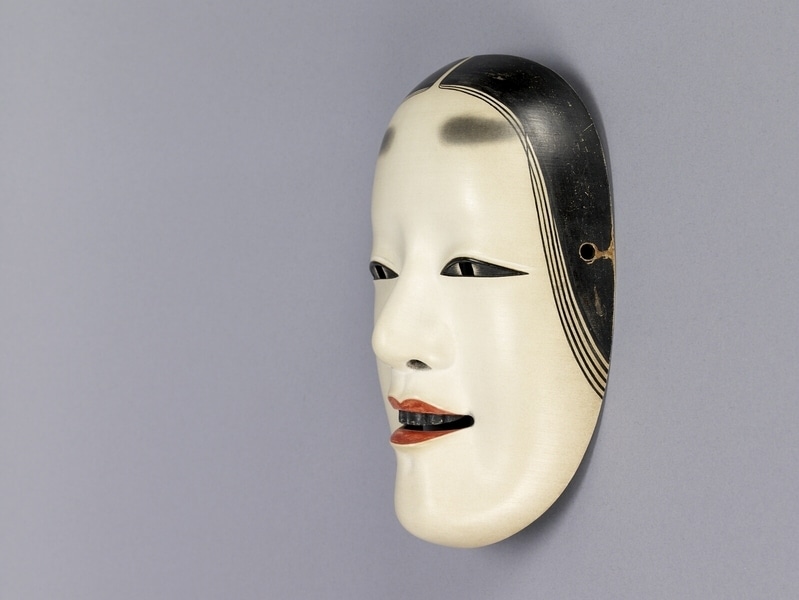
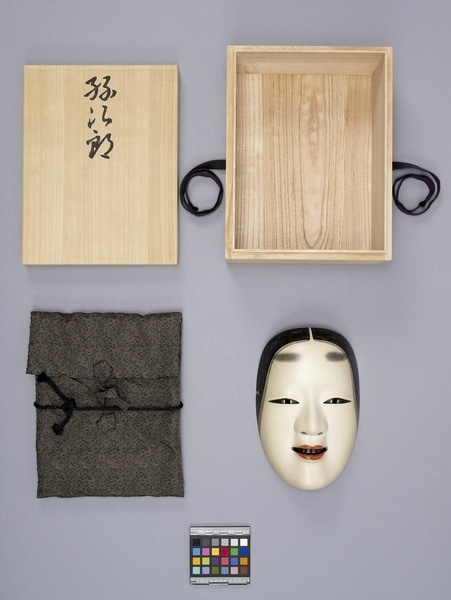
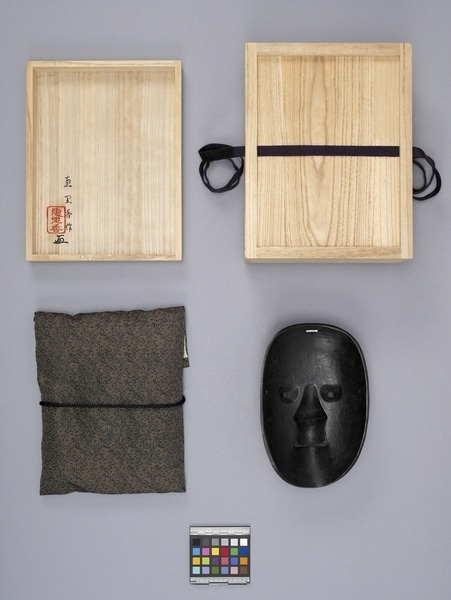
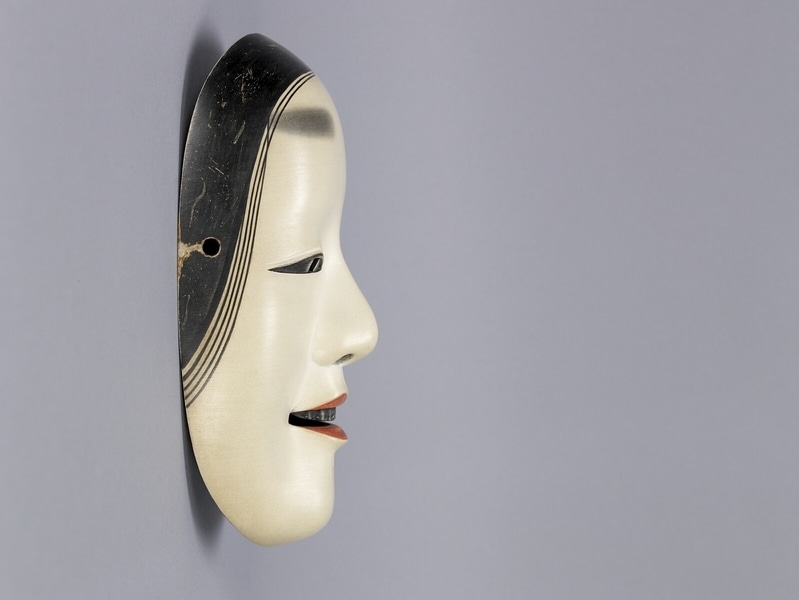
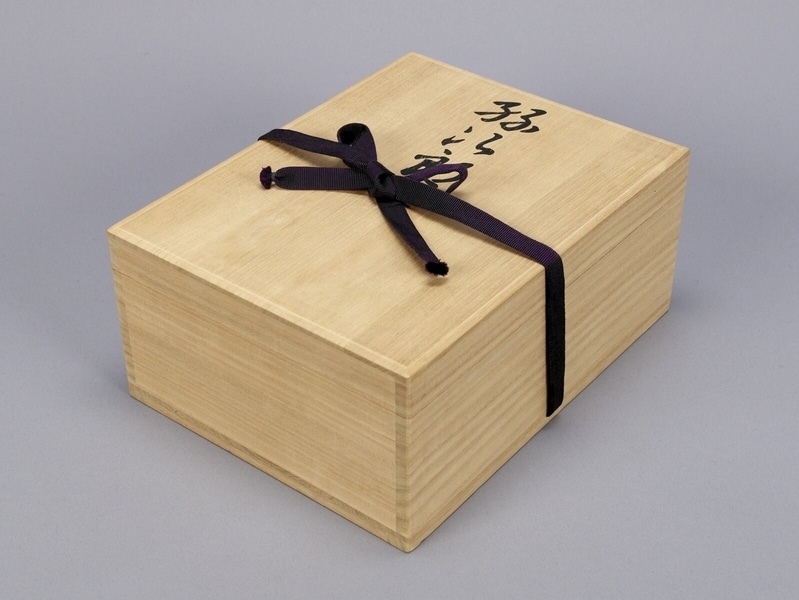
Description
Carved wooden Noh mask of "Magojiro" (part a). Face is white-cream-coloured with black eyes and black hair. The brows are smudged with black. The pupils, nostrils and mouth are cut out. The mouth is red, with black upper teeth. The bag (part b) is dark green with a black and brown floral design. The bag has two ties outlined with green, one on the side and the other on the overlaying flap, to tie together and close the bag. There is also a braided purple string (part c) wrapped around the bag. There is a light brown, rectangular and lidded wood box. The lid has characters written in black on top and characters written in red, inside of a rectangular outline, on the bottom. Attached to the box is a purple ribbon which wraps and ties around the box. The mask fits inside of the bag, which the lays in the box.
History Of Use
Men play both the male and the female roles in Japanese Noh theatre, and masks are worn primarily by the shite (main actor). Masks of women broadly represent female characterizations in Katsuramono (woman or wig plays). The mask is the most significant expressive vehicle in Noh plays. An actor is meticulous about choosing the right mask to enhance his interpretation of the role. From the moment the mask is secured on his face, the actor is regarded as completely transformed into the character he portrays. A mask can be fully appreciated only when it is brought to life by a great actor on stage. Hence, the more a mask is used in performances, the more artistic and historical value it acquires.
Iconographic Meaning
This mask depicts Magojiro, the young woman.
Item History
- Made by Erika Harada (Maker) in Japan during 1980
- Owned by Minobusan Kuonji Temple before July 2, 1985
- Received from Minobusan Kuonji Temple (Donor) on July 2, 1985
What
- Name
- Noh Mask
- Identification Number
- Ed5.2499 a-c
- Type of Item
- mask
- Material
- japanese cypress wood, paint, fibre and starch
- Overall
- height 11.5 cm, width 26.5 cm, depth 20.5 cm
- Part A
- height 20.5 cm, width 14.0 cm, depth 7.0 cm
- Part B
- height 5.0 cm, width 25.5 cm, depth 19.5 cm
Who
- Culture
- Japanese
- Creator
- Erika Harada (Maker)
- Previous Owner
- Minobusan Kuonji Temple
- Received from
- Minobusan Kuonji Temple (Donor)
Where
- Holding Institution
- MOA: University of British Columbia
- Made in
- Japan
When
- Creation Date
- during 1980
- Ownership Date
- before July 2, 1985
- Acquisition Date
- on July 2, 1985
Other
- Condition
- good
- Current Location
- Case 78
- Accession Number
- 1030/0001